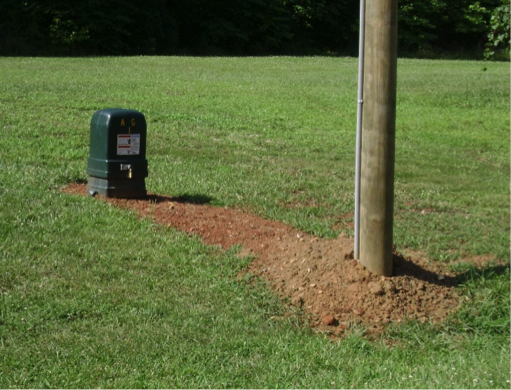Do you feel like your street or neighborhood is too dark? You can request your street or neighborhood be evaluated for improved street lighting by contacting the Street Lighting Technician, Vickie Eddleman, at (704) 638-5213 or vtrou@salisburync.gov.
Street Light Petition FAQs
The City of Salisbury’s Street Lighting Policy uses nationally recognized design guidelines to establish appropriate street lighting levels. If City Staff determines that street(s) are below policy guidelines and it is feasible to make such improvements, a petition will be provided for your use. Once you have collected the signatures of at least 2/3 of the property owners, not tenants, you will return the petition to the Street Lighting Technician.
The petition process is in place to ensure the majority of property owners, in the affected area, want the additional street lighting. In designing a new lighting system, an attempt is made to utilize existing utility poles and minimize the installation of new utility poles. This does not mean that every existing utility pole will get a new light. An attempt is also made to ensure any new utility pole is located along the dividing property lines between parcels.
When a lighting design is created it will be released to Duke Energy for installation. Unless additional right-of-ways or easements are obtained, all work should take place within the road right-of-way. The right-of-way extends beyond the end of the roadway but varies from area to area. Upon completion of the installation, City Staff will perform a field check of their work. If underground service is required, Duke Energy nor the City of Salisbury will be responsible for fine grading or reseeding of the area. The area of installation may contain clumps or piles of dirt, which will settle after several rains.
Here are some pictures, provided by Duke Energy, of work they deem to be acceptable and typical:


If Duke Energy places flags and marking in your yard to indicate where they would like to place their new underground services and/or poles, you must leave these markers in place. It is the property owner’s responsibility to remove any private improvements from the right-of-way or have any underground improvements properly marked, per NC811 guidelines. You can learn about these guidelines by visiting their website http://www.nc811.org/safe-digging-process.html or by dialing 811. Examples of private improvements might be but are not limited to these examples: irrigation/sprinkler lines, invisible dog fences, plants, & yard decorations. Keep any markings, for your private underground improvements, intact until Duke Energy has finished installing their facilities. Duke Energy must have an underground utility locate performed, requiring leaving flags and other marking in place before, during, and after the utility locate. These markings are vital for their staff/contractors to know where the new utility is to be placed as well as where it is safe to do so. If Duke Energy has to replace these markers, they can charge the City for resetting them. If that occurs, the property owner will be charged for any fees incurred, related to the portion within their right-of-way.